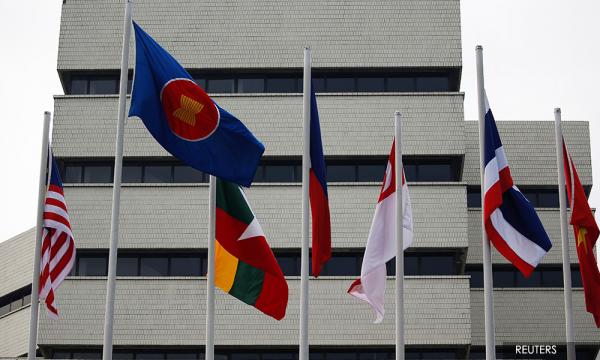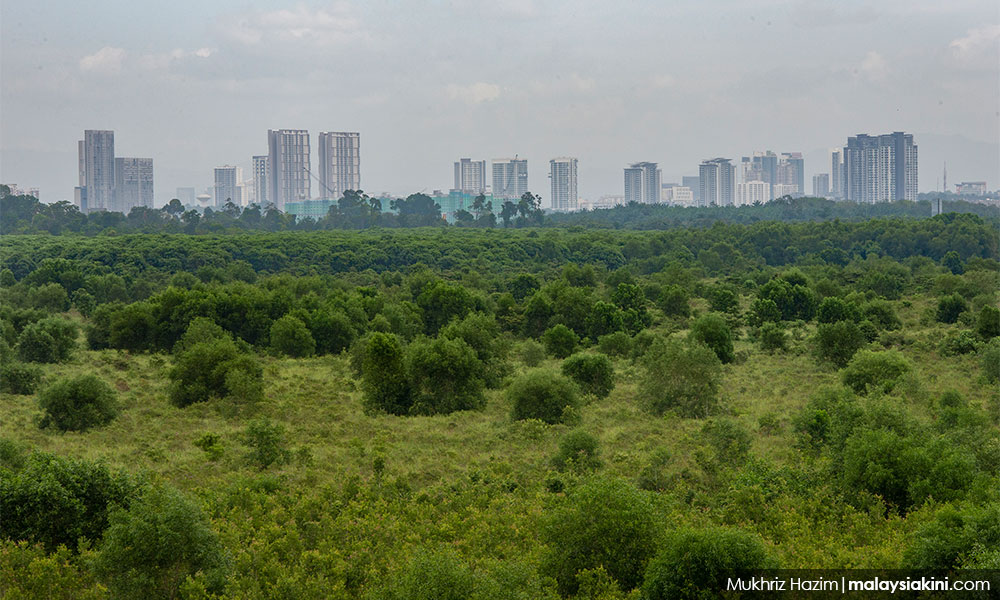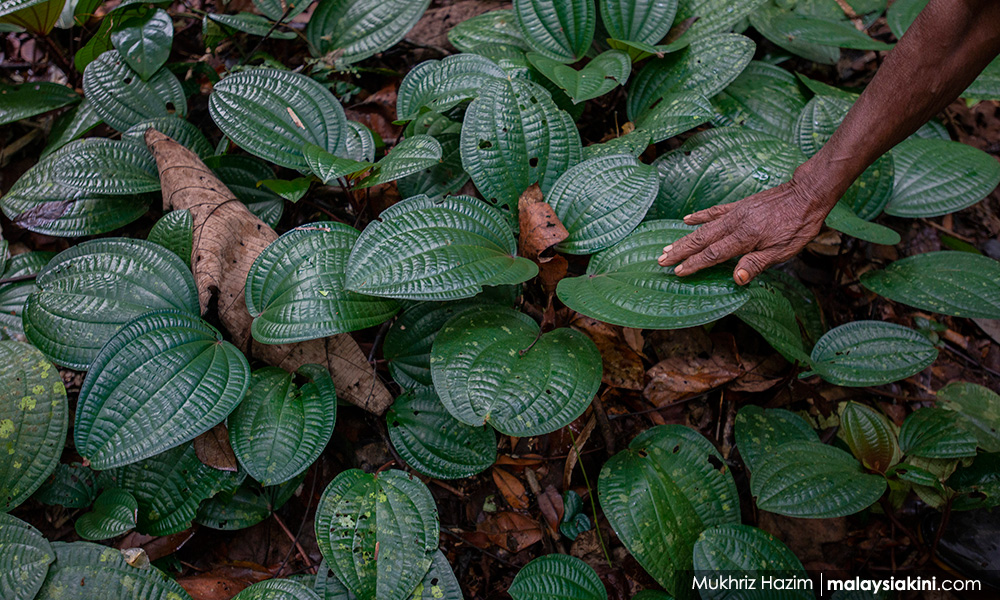LETTER | Former United Nations secretary-general Ban Ki-moon once said at the World Economic Forum in 2015 that we are "the last generation that can take steps to avoid the worst impacts of climate change".
There are urgent calls to drastically reduce carbon emissions in order to address climate change immediately, particularly in Southeast Asia. Asean nations face the threat of climate change and environmental degradation, with fast-sinking cities such as Jakarta, Ho Chi Minh City, and Bangkok facing flooding problems.
Lloyd’s City Risk Index predicts that in the next decade, Southeast Asian nations will incur a US$22.5 billion GDP loss as a result of flooding.
In the developing countries, it would be the poorest that will be affected the most, undermining decades of efforts to reduce income inequalities.
Traditionally, Asean has been heavily dependent on coal for its energy consumption. Nevertheless, in order to reduce carbon emissions expeditiously, there is an increasing focus on renewable energy and other sustainability initiatives in Southeast Asia.
The Asean Catalytic Green Finance Facility (ACGF) was developed in 2019 by the Asian Development Bank (ADB) and Asean nations, to provide Southeast Asian nations with more than US$1.4 billion in loans, to fund green and sustainable infrastructure projects. The ADB will focus on sustainable infrastructure projects in countries such as Cambodia, Indonesia, Laos, and the Philippines.
The aim of this initiative originally is to ensure sustainable economic growth in Southeast Asia by protecting the environment and mitigating climate change.
During the current Covid-19 pandemic, the ACGF aims to help Asean nations make a speedy economic recovery by creating climate-friendly jobs and projects such as renewable energy or energy-efficiency initiatives, which will drastically decrease carbon emissions.
The Green Climate Fund, a global fund assisting developing nations in combating climate change, has given US$300 million to the ACGF to fund sustainable economic recovery activities.
Asean countries also established the Asean Taxonomy board in March 2021, which will set guidelines on sustainable business activities and investments, while fulfilling the Paris Agreement objectives and ensuring decarbonisation. According to the Asean Working Committee on Capital Markets Development, green and sustainable investment might be worth approximately US$3 trillion from 2016 to 2030.
Recently, Southeast Asian countries have been making plans to ensure sustainability. For instance, Brunei developed the Brunei Economic Blueprint earlier this year, as a guide to establish a sustainable economy in Brunei. This is also relevant to goal three of Brunei Vision 2035.
Part of the blueprint helps to ensure that Brunei’s natural environment is protected. The Brunei government will also invest and engage in research and development for green technology and infrastructure projects.
Singapore’s Green Plan 2030 seeks to ensure a net-zero carbon and sustainable future.
Singapore will set up 60,000 electric-vehicle charging ports in public spaces by 2030. The government sector has also announced that it will be providing US$19 billion worth of green bonds, to encourage the adoption of green financing in Singapore.
The Singapore government has also imposed a carbon tax, which is rare amongst Asean countries. This would prompt companies to be more particular about their carbon emissions.
Other than Asean governments, it is irrefutable that banks also play an important role. Unfortunately, according to the latest sustainable banking assessment conducted by World Wide Fund for Nature (WWF), approximately two-thirds of Asean banks lack recognition of biodiversity and deforestation risks, with their banking portfolios highly susceptible to these risks.
Nevertheless, there is an increasing number of Southeast Asian banks that are more aware of environment, social, and governance (ESG) indicators and sustainability measures, as compared to the last decade.
Maybank’s five-year strategic plan includes ensuring a sustainable return on equity while fulfilling ESG factors. Maybank discovered that firms which prioritise ESG factors more than their competitors have performed well financially. Eventually, Maybank hopes to achieve a low carbon economy with its initiatives.
Irrefutably, the ESG criteria are of paramount importance internationally, and particularly in Southeast Asia. Business stakeholders from the firm’s directors, investors, governments, and even consumers, have started to prioritise ESG factors and will make decisions based on them.
For businesses, by embracing and implementing ESG values, this will bring goodwill and good reputation to the firm. There will also be new investment and financing opportunities.
According to Fidelity International, in the first nine months last year, ESG-related securities had performed much better relative to their peers and were less exposed to market risks and uncertainty.
Evidently, the issuance of green securities has grown in prominence during the Covid-19 pandemic, from both the public and private sectors.
Other than governments, financial institutions have the opportunity to address the existential climate emergency by ensuring that their borrowers move towards net-zero carbon. By protecting the environment and ensuring sustainability, this will create green jobs and economic activities driving economic recovery in the midst of the pandemic. This is a win-win situation.
Sustainability-oriented investors would also assess the environmental implications and impact of the green securities and whether the bank is heavily involved in the green securities market or sustainability activities before they make an investment. Investors can depend on independent third-party certifiers, who can offer valuable insights into the performance of the green securities. For instance, they can ascertain whether the securities are legitimate, by authenticating the carbon emissions metrics.
Recently, the Philippines central bank encouraged banks to provide green and sustainable financing.
Since 2019, the Bangko Sentral ng Pilipinas (BSP) has been promoting ESG factors, as well as participating in sustainable financing activities.
The Philippines central bank’s strategic plan from 2020 to 2023 is to ensure environmentally-friendly and sustainable business activities. According to the BSP, banks have circulated US$1.8 billion in sustainable debt securities, as of mid-2020.
For instance, the Development Bank of the Philippines issued Asean sustainability bonds last year, in support of environmental and sustainability projects. Financial magazine The Asset awarded the Development Bank of the Philippines the award of the “Best sustainability bond - Financial institution” in 2020.
As Asean nations recover from the pandemic, it would be an opportune moment to refine processes and activities, to be net-zero carbon. Climate change, in particular rising sea levels, poses a threat to the survival of Southeast Asian businesses and individuals.
Collectively, Asean firms, financial institutions, governments, individuals, and Asean partners can all work together, to make a significant difference on the environment.
The views expressed here are those of the author/contributor and do not necessarily represent the views of Malaysiakini.




